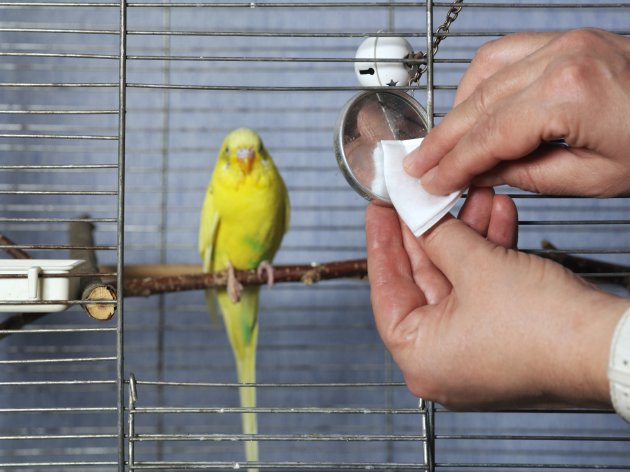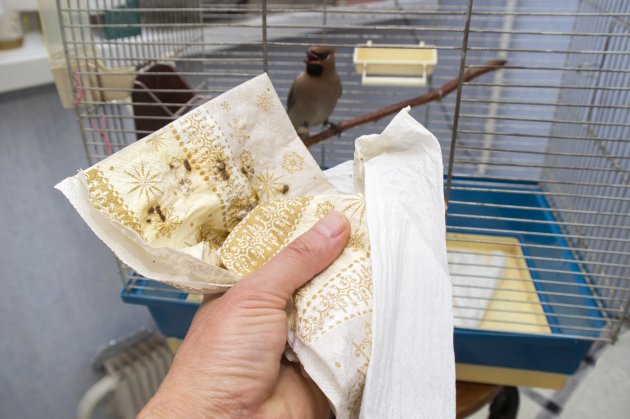Having birds for pets can be a lot of fun. Pet birds amuse their owners with their singing, random quirks, and crazy antics. However, there are responsibilities that come with it as well. One of those responsibilities is keeping your birds’ cage clean. While birds can keep themselves neat, their cages can get dirty… fast!
A clean and fresh-smelling cage is what your feathered friends need to live happier longer. The question is how do you clean a cage without chemical cleaners? Read on to learn how.
How to Clean a Birdcage without Chemicals:
1. Gather cleaning paraphernalia
Assemble all the materials you need before you start your cleaning activity. These include the following:
- Cleaning cloths
- Cotton pads
- Fresh cage liners
- Natural disinfectant
- Paper towels
- Sandpaper
- Scrubbing brush
2. Leave the birdcage bare
Move your pets to a safe area, preferably a temporary cage in a different room. Relocating your avian pals also prevents them from getting stressed out by the cleaning process.
Likewise, remove any possessions your birds have inside the cage. These include perches, toys, dishes, and other miscellaneous items. You need unrestricted access to the nooks and crannies of the birdcage to clean it efficiently.
Use a handheld vacuum cleaner or a small broom and dustpan to get rid of loose food, droppings, and other debris you find on the bottom of the cage. Lastly, throw away the used liner.

3. Prepare the cleaning solution
It is best to abstain from household cleaning products, as they emit strong chemical smells that can bring upon deadly consequences to your birds. Likewise, you shouldn’t use any commercial birdcage disinfectant unless your vet recommends it. Many manufacturers label their products “bird-friendly” even when they aren’t. To stay on the safe side, make your own cleaning solution.
Vinegar
According to a trusted source, vinegar is effective in killing microbes. This kitchen staple exhibits natural disinfectant properties, as it contains acetic acid. White vinegar, which is the most common vinegar, tends to have 5% acetic acid. This is enough to kill bacteria and fungi in your birds’ cage.
Combine one part of vinegar with two parts of warm water. Use undiluted vinegar with 20% acetic acid if you need to remove hardened bird droppings, rust, and for other tough tasks.
Lemon
Lemons also exhibit natural germicidal activity to help clean and deodorize your birds’ cage. The citrus scent of lemons is also fresh and invigorating, while the oils in the rind can help add sheen to the birdcage.
Combine three tablespoons of lemon juice to three cups of warm water.
Baking soda
Baking soda has antibacterial and antimicrobial properties. It also eliminates bad odors. Since it is a mild abrasive, it can break down stubborn remnants of bird droppings.
You can mix equal parts of vinegar and baking soda to amplify vinegar’s germ-killing prowess.
4. Remove stubborn scat and debris
Now that you know how to keep your birds’ cage clean without using bleach and strong detergents, it’s time to move the cage outdoors, so you can scrape away lingering bird doo-doo.
Wear protective gloves and submerge several cotton pads in undiluted white vinegar. Allow it to rest over the hardened poop and debris for half an hour. Then scrub those areas with baking soda and a toothbrush.

5. Clean the cage thoroughly using your preferred solution
Give the birdcage a good rinse, followed by a thorough scrub using your preferred homemade cleaning solution. Do not forget to include the top, bottom, and the bars of the cage. Rinse the cage thoroughly using hot water for best results. Then soak up excess water using paper towels or cleaning cloths.
6. Disinfect the cage6. Disinfect the cage6. Disinfect the cage
Use your lemon solution to disinfect the cage. If you do not have a spray bottle, soak a clean towel in the disinfectant solution and wipe every surface with it.
7. Attend to other matters while you wait for the cage to dry
Leave the cage outside to dry au naturel or wipe it down using a towel. While waiting for the cage to dry completely, tidy up the surrounding areas of the birdcage. Pick up seeds, feed, and feathers that may have fallen out of the cage.
8. Clean the cage accessories
Soak all bird equipment with the same solution you used to clean the cage. You may use a fine-toothed brush or sandpaper to remove stubborn debris from wood perches. Submerge the accessories in a bowl of hot water for a few minutes before giving them a final rinse.
9. Place a new liner and put back accessories
Put back the cage accessories once they are dry. Do not forget to place a new cage liner. You can use old newspapers or any other recycled paper. This way, you can easily remove the liner and replace it with a clean one whenever it gets dirty. Just be sure to lay down at least eight layers of paper to ensure it can hold droppings and debris well. You should replace birdcage liners every day to get rid of unwanted material. Don’t wait for the liner to get soggy and musty.
10. Put your birds back into their cage
Finally, your birds can head back into their abode where they can relax and play with their favorite toys.
How Frequently You Should Clean the Birdcage
How often you need to clean the birdcage depends on a few factors. These include:
- The dimensions of the birdcage
- The size of your bird(s)
- The number of birds living in the cage
- How much time the birds stay inside the cage
Smaller cages with only a pair of small birds may only need to be cleaned bi-weekly or once a month, especially if the birds are out frequently.
On the other hand, large cages housing large birds or cages with multiple birds should be thoroughly cleaned and sanitized at least once a week. For this reason, it is beneficial to choose a birdcage with casters, as they are portable.
Tips
- To make cleaning a breeze, choose a cage that is equipped with a grate and a removable tray on the bottom.
- It helps to choose a cage that has casters, so you can move a large cage with ease. You won’t have to go through the entire process of assembling and disassembling a cage each time it needs a scrub down.
- Since birdcages need frequent cleanings, you want a cage that is heavy-duty and rust-resistant, so it can last for many years. Check out these sturdy birdcages complete with casters, a grate, a removable tray, and a storage compartment.